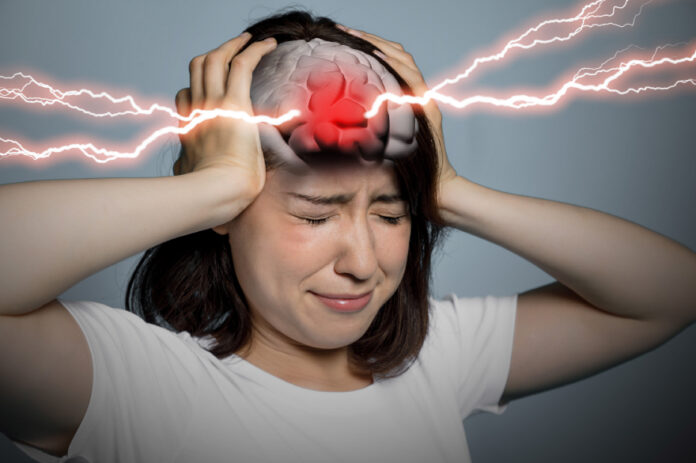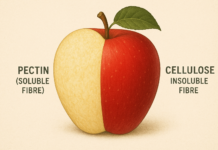Dr Said Qabbaah, Medical Writer & Public Health Expert
A stroke is a medical emergency that requires immediate attention. It happens when the blood supply to any part of the brain is interrupted or reduced, preventing the brain tissue from getting the oxygen and nutrients it urgently needs.
Within minutes, brain cells begin to die, which means that quick action is absolutely necessary to try to limit the damage caused.
Causes of stroke
Strokes are primarily classified into two main types: those caused by reduced blood flow (ischaemic) and those caused by bleeding (haemorrhagic).
Ischaemic strokes
These strokes account for over 80 per cent of all strokes. They happen when a blood clot blocks or narrows an artery leading to the brain. These clots can form due to several conditions such as the buildup of fatty deposits on the inner walls of arteries.
Also, a blood clot may form in the heart and travel to the brain. Atrial fibrillation, a type of irregular heartbeat, is a common cause of blood clots that could result in strokes.
A stroke may also occur when blood flow is blocked in the smaller blood vessels deep within the brain.
Haemorrhagic strokes
These strokes happen when a blood vessel in the brain bursts, leading to bleeding in or around the brain. This type accounts for around 15 per cent of all strokes. The main causes include:
Prolonged high blood pressure that can weaken blood vessels, making them prone to ruptures
Abnormal bulges in blood vessels that can burst, leading to haemorrhage
An abnormal connection between arteries and veins in the brain that can rupture, causing bleeding
Head trauma that can cause blood vessels in the brain to rupture
Symptoms of stroke
Recognising the signs of a stroke can save lives and reduce their negative impact. The acronym FAST helps people remember the most common symptoms of strokes:
Face drooping: One side of the face may droop or feel numb. Ask the person to smile and see if it appears uneven
Arm weakness: One arm may become weak or numb. Ask the person to raise both arms and see if one drifts downward
Speech difficulty: Speech may become slurred or hard to understand. Ask the person to repeat a simple sentence
Time to call emergency services: If any of these symptoms are present, call emergency services immediately
There are also many other symptoms of strokes.
These include:
Sudden confusion or trouble understanding speech
Sudden trouble seeing in one or both eyes
Sudden trouble walking, dizziness, loss of balance, or lack of coordination
Sudden severe headache with no known cause
Effective prevention strategies
Preventing strokes involves managing risk factors and making healthy lifestyle choices.
Key strategies to reduce the risk of developing a stroke are aimed at lowering the risk of developing high blood pressure, diabetes and high cholesterol, in addition to their resulting complications.
Having regular medical ‘check-ups’ which can help in the early detection and management of risk factors for stroke.
They must involve the regular monitoring of blood pressure, blood sugar and cholesterol.
For those who have chronic health conditions such as high blood pressure or diabetes, they must take their prescribed chronic medications exactly as directed by their doctor
Reducing salt intake and eating a healthy balanced diet rich in fruits, vegetables, whole grains and lean proteins, such as fish, poultry, beans and nuts. This should be done while limiting as much as possible foods containing saturated and trans fats, cholesterol and salt, as well as avoiding processed foods, sugary foods and drinks
Engaging in regular physical exercise, which helps maintain a healthy weight, lower blood pressure and reduce stress. Aim for at least 150 minutes of moderate-intensity exercise per week, such as:
Brisk walking
Jogging
Cycling
Swimming
Other similar physical activities
Maintaining a healthy weight, because obesity and being overweight contribute to various stroke risk factors, including hypertension, diabetes and high cholesterol. Strategies for maintaining a healthy weight include:
Eating a balanced, nutritious diet
Engaging in regular physical activity
Setting realistic weight loss goals and tracking progress
Limiting alcohol consumption, since excessive alcohol intake can increase blood pressure and the risk of strokes. General guidelines for moderate drinking include:
Limiting alcohol to no more than one drink per day for women and two drinks per day for men
Choosing non-alcoholic alternatives whenever possible
Quitting smoking because smoking damages blood vessels and significantly increases the risk of strokes.
Fortunately there are many options available to smokers that can help them stop smoking such as:
Seeking counseling or support groups
Using nicotine replacement therapy or medication
Making a “quit plan” and setting a “quit date”
Monitoring and treating atrial fibrillation if present. This common heart rhythm disorder increases the risk of a stroke. Management of this potentially dangerous irregular heart beat includes:
Regular monitoring by a healthcare provider
Taking prescribed medications to control heart rate and rhythm
Considering blood-thinning (anticoagulant) therapy to prevent blood clots
Many strokes are preventable by understanding the causes, recognising the symptoms and being aware of the effective prevention strategies.
Adopting a healthy lifestyle, managing medical conditions and staying vigilant about cardiovascular health are key steps in stroke prevention.
Remember, in the event of a stroke, every minute counts, so knowing the signs and acting FAST can help save lives and improve health outcomes.
You can contact Dr Said Qabbaah at [email protected]






